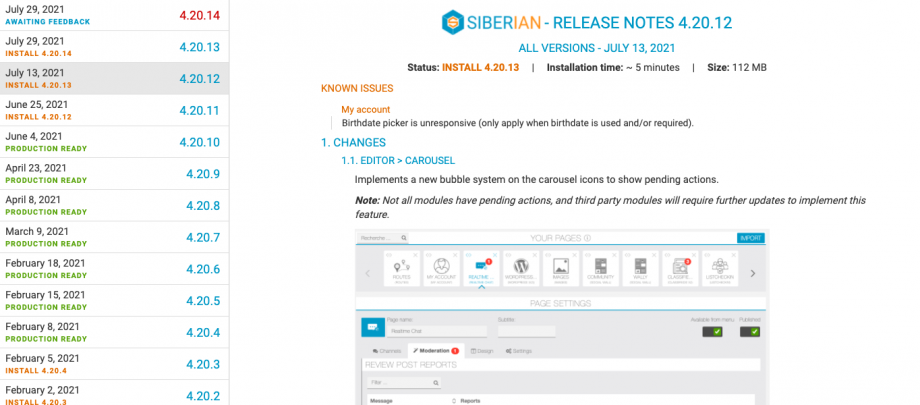Siberian updates are atomic & incremental
- Atomic: only changed files are included inside update archive, along with a list of files to remove
- Incremental: you can only go forward with updates, if you need to revert the only option is to restore a backup
With these informations, we can now continue
Since 4.20.0 you are able to choose between “Stable” and “Testing” update channels, as said previously, you can only go forward with updates, so when you have installed the next update, there is no way to go back (apart from restoring a backup).

To spread & reduce the risk of critical issues on production servers (ie: Siberian serving live apps, compared to Siberian test instances)
We implemented the channels to first release all updates under “Testing” during a short period, generally 1 or 2 weeks, before moving it to the “Stable” channel.
This time gives us the opportunity to identify possible issues, and the time to release another update, way before the update can go live on “Production sites”
Update definitions:
- Testing: This is the first stage, when a package has been internally tested and is safe (ie: there is no critical issue which can prevent further updates & it is conform to the release notes). 1-2 weeks.
- Stable: After the testing stage, the update goes live in the “Stable” channel, that doesn’t mean update is free of issues, but is stable enough to run a production site.
- Production ready: Only the most stable versions are tagged as Production ready if you need to run a very safe instance, we recommend you to always stay on production ready updates.
In practical, now you will also new messages on the backoffice, if you are on a version tagged as unstable, a message with recommendation will be displayed (you may need to switch to Testing channel to update)

Below, you can see the “Release notes” website, it is very useful to track changes & updates

Side notes:
- A “Testing” version can be marked as “Unstable” or “Stable“
- A “Stable” version can be tagged as “Production ready” or if a critical issue is discover very late, tagged as “Unstable” when a subsequent version fixes the latter.
The lifecycle of apps is very fast due to regular changes from Google & Apple, and we have to closely follow their changes for you to be able to publish apps.

